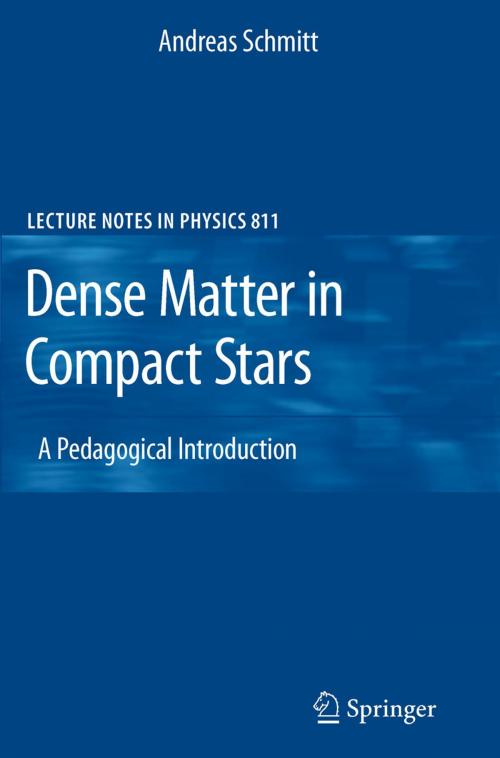Dense Matter in Compact Stars
A Pedagogical Introduction
Nonfiction, Science & Nature, Science, Physics, Nuclear Physics, Astrophysics & Space Science| Author: | Andreas Schmitt | ISBN: | 9783642128660 |
| Publisher: | Springer Berlin Heidelberg | Publication: | August 25, 2010 |
| Imprint: | Springer | Language: | English |
| Author: | Andreas Schmitt |
| ISBN: | 9783642128660 |
| Publisher: | Springer Berlin Heidelberg |
| Publication: | August 25, 2010 |
| Imprint: | Springer |
| Language: | English |
The purpose and motivation of these lectures can be summarized in the following two questions: • What is the ground state (and its properties) of dense matter? • What is the matter composition of a compact star? The two questions are, of course, strongly coupled to each other. Depending on your point of view, you can either consider the ?rst as the main question and the second as a consequence or application of the ?rst, or vice versa. If you are interested in fundamental questions in particle physics you may take the former point of view: you ask the question what happens to matter if you squeeze it more and more. This leads to fundamental questions because at some level of suf?cient squeezing you expect to reach the point where the fundamental degrees of freedom and their interactions become important. That is, at some point you will reach a form of matter where not molecules or atoms, but the constituents of an atom, namely neutrons, protons, and electrons, are the relevant degrees of freedom.
The purpose and motivation of these lectures can be summarized in the following two questions: • What is the ground state (and its properties) of dense matter? • What is the matter composition of a compact star? The two questions are, of course, strongly coupled to each other. Depending on your point of view, you can either consider the ?rst as the main question and the second as a consequence or application of the ?rst, or vice versa. If you are interested in fundamental questions in particle physics you may take the former point of view: you ask the question what happens to matter if you squeeze it more and more. This leads to fundamental questions because at some level of suf?cient squeezing you expect to reach the point where the fundamental degrees of freedom and their interactions become important. That is, at some point you will reach a form of matter where not molecules or atoms, but the constituents of an atom, namely neutrons, protons, and electrons, are the relevant degrees of freedom.















